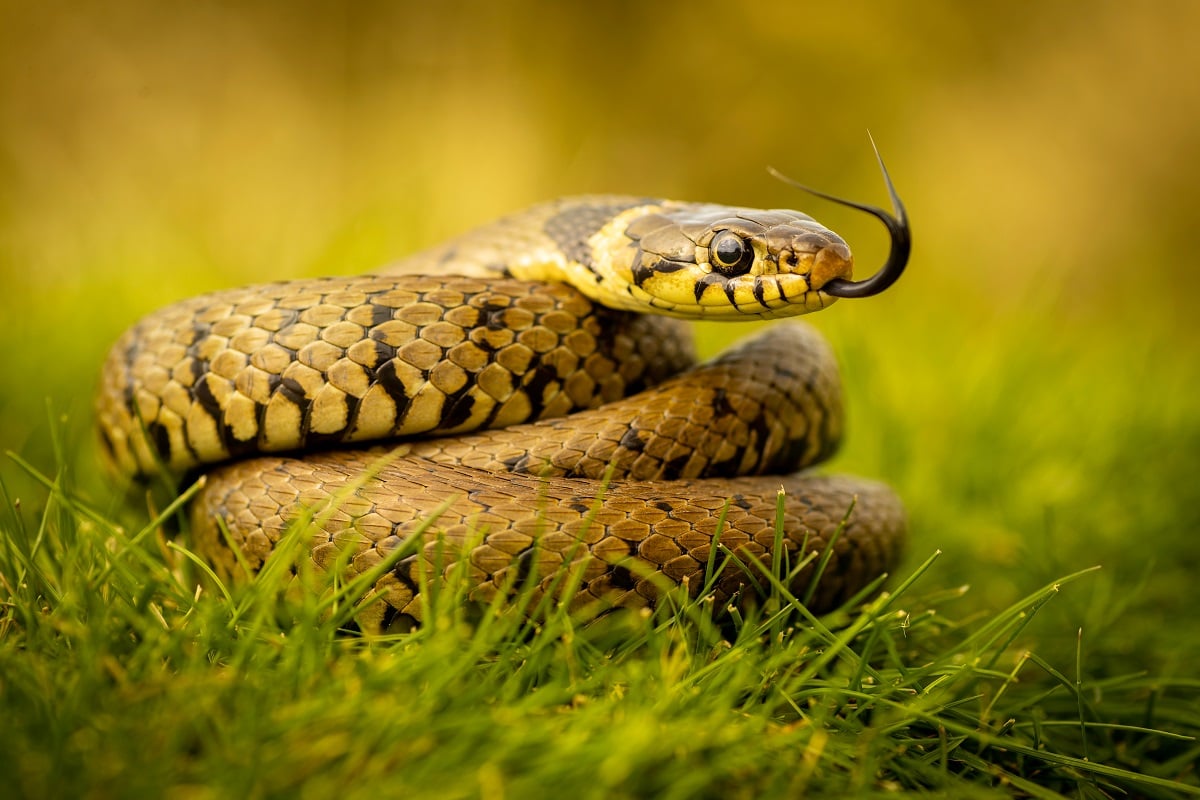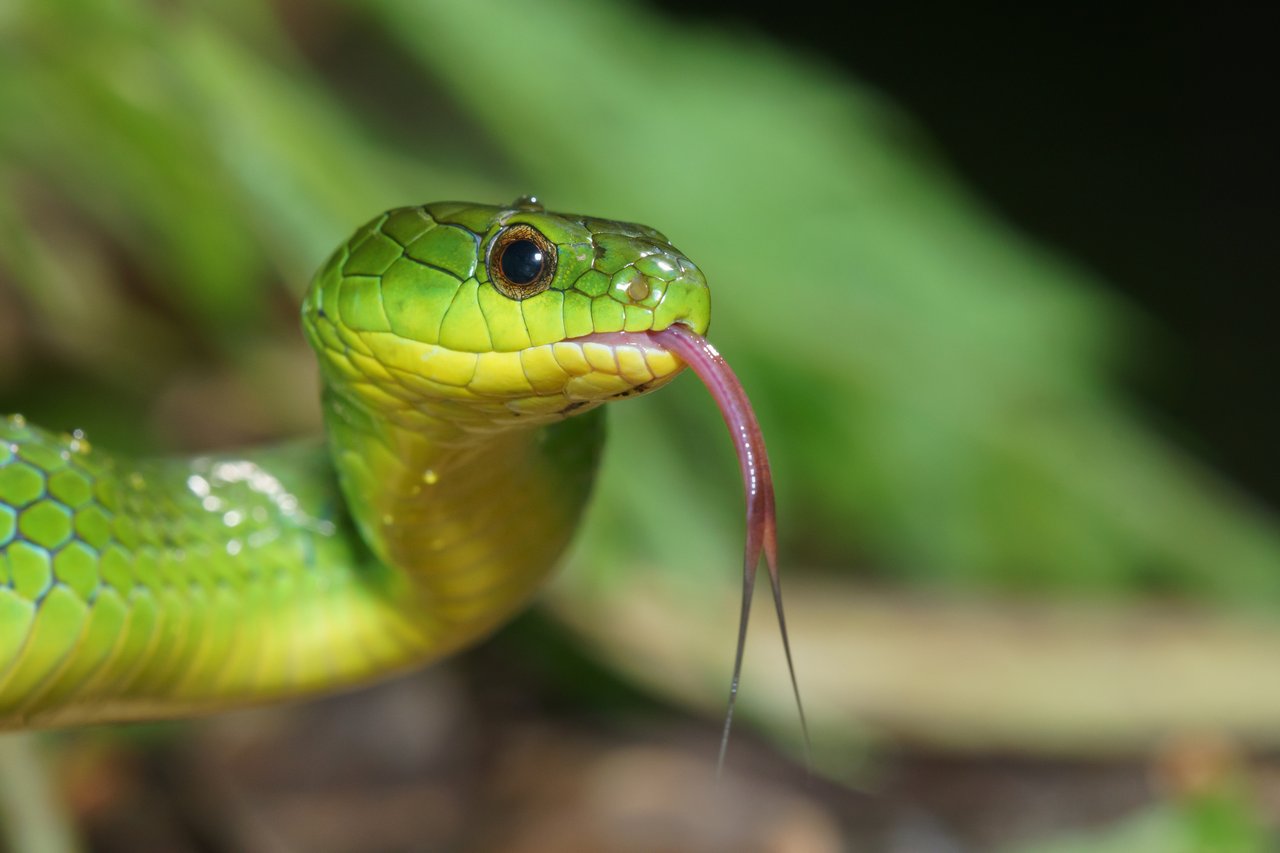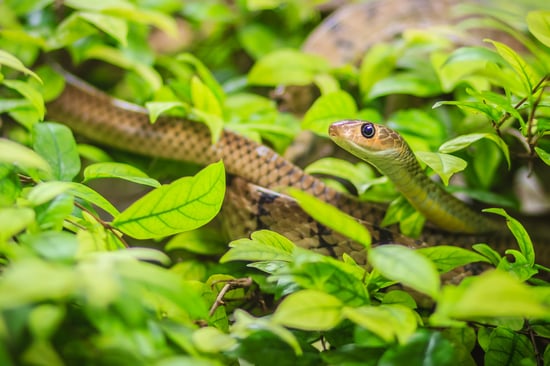
Snake facts
Common name: Snake
Scientific name: Serpentes
Distribution: Every continent except Antarctica
Here are some super facts about snakes!
According to the latest count, there are 4,038 snake species, making them the second largest group of reptiles after lizards. They are divided into 30 different families and numerous subfamilies. Canada is home to approximately 25 species.
Snakes are “solar-powered” and rely on external heat. Reptiles sometimes get labelled “cold-blooded”, but this is incorrect as their blood isn’t actually cold. The accurate term is “ectothermic,” meaning their body temperature is variable and regulated by external sources. That said, there are exceptions to this rule. Some large reptile species like pythons are ectotherms, but they can shiver to make heat. Unlike mammals and birds, who can internally regulate their body temperature (endotherms), most reptile species need to use sources of heat, like the sun, to warm up. It's important for ectotherms to warm up because their metabolic processes and overall physiological functions (digestion, bodily functions, movements) are dependent on external heat sources for proper functioning and maintaining their optimal activity levels.
Not all snakes lay eggs. You might have learned in school that reptiles are different from mammals because they lay eggs. While approximately 70% of snakes lay eggs (oviparous), many species give live birth (viviparous). Then there are some species where the embryo develops inside an egg which hatches inside the womb and is then born live (ovoviviparous)!
Snakes don't have eyelids. This means they don’t blink and have to sleep with their eyes wide open. Instead of eyelids they have a thin membrane attached to each eye to protect them. The membrane is called the “brille,” which in German means glasses.
Snakes smell with their tongues. Snakes do have nostrils, but they don’t use them to smell. Instead, they have evolved to smell with their tongue, by using their Jacobson’s organ in the roof of their mouth. They have a forked tongue and multiple receptors able to pick up different amounts of chemical cues, also known as “smelling in stereo”. Snakes have therefore an excellent sense of smell.
Snakes’ table manners are different than ours. When snakes are eating, they can’t help but to swallow their food whole because they can’t chew. Instead, snakes have very flexible lower jaws which allows them to eat animals who are 75% - 100% larger than their own head. The chemicals in their digestive track will do all the work and break down the food once ingested.
Snakes have five forms of locomotion. Imagine a snake moving through the grass. What do you picture? The well-known s-movement? This wouldn’t be surprising, because this is the most recognizable form of locomotion in snakes, also known as lateral undulation. But snakes have four other types of movement. Arboreal snakes, for example, use a form of locomotion which uses seven times more energy, called concertina. Concertina locomotion involves alternately pulling up the body into bends and then straightening out the body forward from the bends. There is even a special locomotion used for when a snake tries to escape on a smooth surface, known as slide pushing.

Snakes are sentient beings – they think, feel, and have unique personalities
- Self-recognition has long been considered an ability unique to humans and a handful of species like dolphins, chimpanzees, and elephants. Yet, recent studies are beginning to challenge this.
- Research published in the scientific journal Behaviour, shows that garter snakes (Thamnophis sirtalis) can recognize their own chemical cues as distinct from those of other snakes – this is considered the snake equivalent of recognizing yourself in the mirror!
- Snakes rely heavily on chemical cues – to evade predators, to hunt prey, to find a mate, and to navigate their habitat. And now, it’s believed, they can use this skill to recognize their own chemical signature and discriminate it from others!
- Once thought to be solitary beings, research published in Behavioural Ecology and Sociobiology proves this wrong. This study found that Eastern garter snakes (Thamnophis sirtalis sirtalis) not only actively seek social interaction, but they prefer to associate with specific individuals or groups! Regardless of the reasons behind why these snakes seek out these “friendships” (warmth, protection), this study shows that snakes have more social intelligence than most of us might realize.
